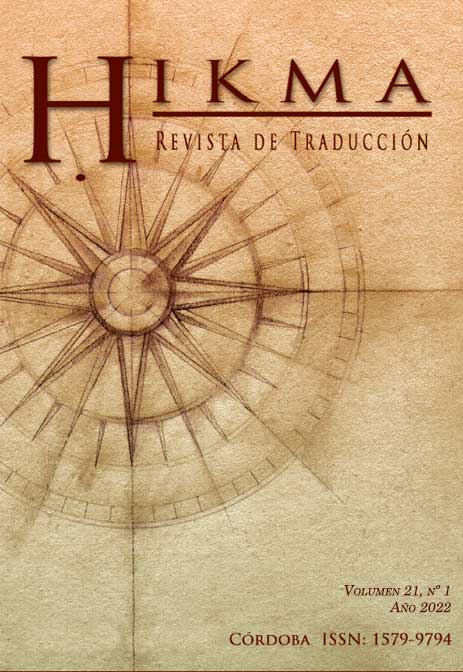La estrategia publicitaria femvertising y la subtitulación: análisis crítico del mensaje de empoderamiento femenino en YouTube
Contenido principal del artículo
Resumen
El presente estudio se propone examinar las estrategias publicitarias de empoderamiento femenino en la publicidad audiovisual de marcas globales de cosmética. No se trata de anuncios convencionales que ensalzan la juventud eterna ni propagan un cuerpo femenino de medidas perfectas e inalcanzables. La estrategia publicitaria se basa en fomentar el empoderamiento de la belleza femenina con mensajes publicitarios en pro de la diversidad del cuerpo femenino. Este tipo de anuncios no se propone transmitir una imagen estereotipada e idealizada de la belleza femenina. En el lenguaje especializado de la publicidad se denominan los anuncios que persiguen el empoderamiento de la mujer femvertising. La traducción feminista y de género aplicada a la traducción audiovisual, en general, y, en especial, a la subtitulación de anuncios publicitarios audiovisuales forma el marco referencial de este estudio. En concreto, se analizará y se comparará la subtitulación intra e interlingüística de un anuncio audiovisual con el original. Aplicaremos para nuestro análisis el estudio de caso como método analítico. Primeramente, se determinará la carga ideológica del anuncio audiovisual con la finalidad de entrever cómo se construye el discurso del empoderamiento femenino y, a continuación, se comparará cómo se articula en el subtitulado. Contrastaremos la subtitulación que ofrece YouTube para el visionado del anuncio. Esta plataforma virtual ofrece dos modalidades de generación de subtitulado automático que determina la subtitulación interlingüística. El análisis revelará a) cómo se construye discursivamente el empoderamiento femenino y esclarecerá si realmente el concepto de belleza redefinido por el femvertising es de empoderamiento femenino frente a los cánones de belleza establecidos, b) cómo se trasladan los mensajes de empoderamiento femenino en la subtitulación automática de YouTube y, finalmente, en una visión más amplia, c) si esta plataforma, debido a su alcance global, contribuye mediante la subtitulación al activismo feminista transnacional y constituye un puente en la comunicación publicitaria intercultural.
Descargas
Detalles del artículo

Esta obra está bajo una licencia internacional Creative Commons Atribución-NoComercial-CompartirIgual 4.0.
Los autores que publican en esta revista aceptan las siguientes condiciones:
- Los autores conservan los derechos de autor y conceden a la revista el derecho de primera publicación con el trabajo simultáneamente bajo una Licencia de Atribución Creative Commons que permite a otros compartir el trabajo con un reconocimiento de la autoría del trabajo y la publicación inicial en esta revista.
- Los autores pueden llegar a acuerdos contractuales adicionales por separado para la distribución no exclusiva de la versión publicada del trabajo en la revista (por ejemplo, enviarlo a un repositorio institucional o publicarlo en un libro), con un reconocimiento de su publicación inicial en esta revista.
- Se permite y anima a los autores a publicar sus trabajos en línea (por ejemplo, en repositorios institucionales o en su sitio web) antes y durante el proceso de presentación, ya que puede dar lugar a intercambios productivos, así como a una citación más temprana y mayor del trabajo publicado (Véase El efecto del acceso abierto).

